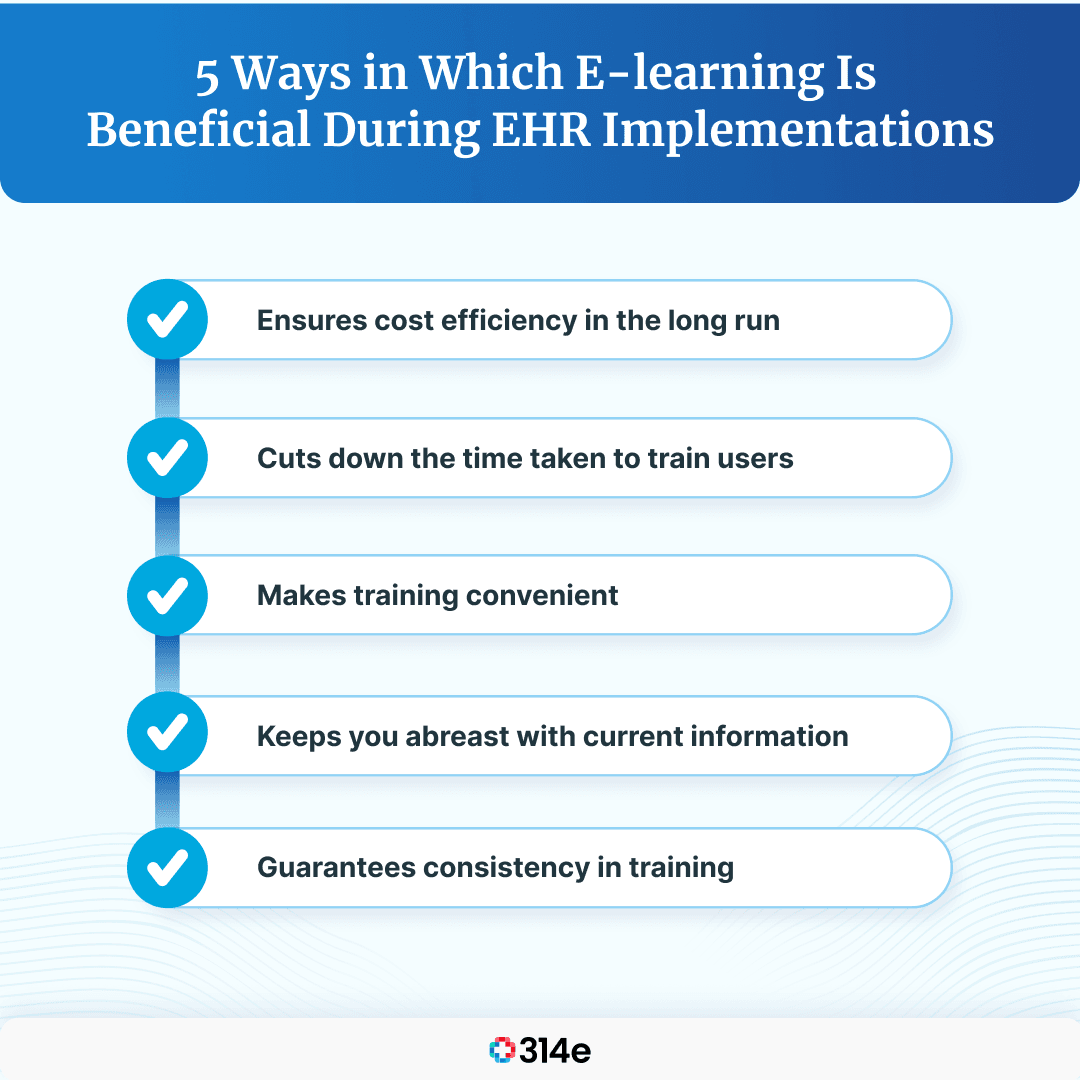
How Training Initiatives Helped Empower and Prepare Baylor Scott and White Health for COVID-19 (Part 2)
Part 2 of 3: Jerrie Rankin, VP of Operational Informatics with Baylor Scott & White Health and Nicholas …

Training is the most crucial aspect of implementing and adopting a new EHR, and it decides the success of an implementation. When it comes to training, delivery could be traditional instructor-led training or e-learning, or at times, a combination of both. The advances in healthcare have created the need for clinicians to stay updated in all areas of health information technology, and this is where an efficient and convenient methodology like e-learning comes into the picture.
In this article, you will learn about:
Like every other service, healthcare has also transitioned to providing care with the aid of digital technology. The mandatory transition from manual to Electronic Medical Records (EMRs) is what makes the training with e-learning resources all the more relevant. E-learning also depicts the best way to shift from traditional to electronic methods by actually making the switch. The following are some of the benefits that a health system could achieve with e-learning resources:

One of the key benefits of e-learning for EHR implementation, when compared to in-person training, is that it is cost-efficient in the long run. This is possible mainly because with e-learning, training content, once created, can be used for a longer duration. Another benefit of e-learning is that the need for the instructor to be physically present is eliminated, and the costs for the trainers, travel, and accommodation are all cut down. In addition, the other considerations for manual training, such as the venue, hardcopy of the training materials, the fixed timings, etc., do not cause trouble when it comes to e-learning, which again leads to reduced costs.
Training provided through e-learning resources has the potential to cut down the training time by almost 50 percent. The self-paced learning becomes extremely advantageous when compared to the traditional methods as the time taken to get trained is literally halved, indicating the capability to take more training in lesser hours. This certainly ensures that your clinicians spend much more time with patients than with the software.
E-learning makes training a lot more convenient than traditional methods could. It possesses the capability to provide resources at any place and at any time. The resources can be created at one place and utilized at another. This is very useful for clinicians, especially because their primary role is to be engaged in patient care, and they cannot afford to spend a lot of time away from the job for training. E-learning provides your clinicians with the option to access training resources at their convenient time, and this makes it all the more appealing.
Traditional learning, at times, finds it difficult to keep the trainees/users updated with the latest information, but with e-learning, creating training resources and updating it with current information is relatively easier. Keeping your EHR users updated about the newer functionalities, post-implementation or for that even after an upgrade, is much simpler with e-learning.
In-person training’s effectiveness normally depends on the capabilities of the specific trainer, and with in-person training, the chances of manual errors are relatively high. E-learning, on the other hand, can centralize the training and beat all the inconsistencies that come with traditional training methods.
When done right, e-learning can lead to optimum cost savings in the following cases:
One key point to remember is that e-learning is not just a mere presentation but much more, and this should be taken into consideration when creating training content. It is good to evaluate the possible problems that your EHR users might face with the implementation and curate the training content on the basis of such specific use cases so that the training becomes all the more relevant. The e-learning resources tend to become all the more effective when the content is practicable; this actually helps win the user’s attention and keeps them interested throughout the training.
Simulation-based learning could be a part of the training curriculum. Simulation-based learning in a virtual environment could help provide a risk-free environment to practice and also ensure positive patient outcomes that actually bring down the negative patient impact occurring during a patient encounter. This could also prove to be a great tool to improve the quality of services provided in healthcare.
It also becomes important to remember that when your e-learning strategy is created, it must be done in such a way that it makes learning educative and interesting at the same time. Your e-learning resources would be able to help users when it is following an active learning approach where the trainees are active participants and not merely passive observers. The training could also be made relevant by providing e-learning resources that are contextual and provide role-specific guidance.
E-learning tools tend to be complicated, and it is always better to have instructional designers to ensure optimum benefits when it comes to e-learning. Instructional designers possess the capability to understand and offer expertise when it comes to creating large-scale curricula writing and mastering e-learning tools. When it comes to preparing training content with the help of such instructional designers, you can use the expertise available or outsource the responsibility and monitor consistently.
E-learning isn’t just useful when it comes to EHR implementation but even after that. E-learning is extremely useful when it comes to providing your clinicians with continuous training and support to help them with easy and effective adoption of the EHR. An e-learning training and support resource could help your clinician every time they are stuck in the workflow because of task-related questions; including e-learning as a part of your healthcare application support strategy for continuous training and improvement could be very cost-effective as it eliminates the need for a separate training team to always be present on the healthcare premises.
When it comes to using e-learning for support training, it is good to take the following into consideration.
To conclude, it can be said that e-learning can help with saving money during EHR implementations, provided some factors are taken into consideration. While e-learning can save a lot of money when compared to in-person or classroom training, it is important to remember that is going to take a lot of time to create. Hence it is good to think of the way such resources are going to be put to use. Something else that is equally important and needs to be considered is to evaluate the willingness of your EHR users to take up e-learning when it comes to implementation and even after that. Last but not least, it is also important to consider how the content is going to be created and served. Outsourcing this task to an external vendor could certainly lessen the burden when it is the right vendor. At 314e, we help reduce the time away from the job, improve employee learning retention and increase the effectiveness of training. With over 6000+ hours of e-learning training experience, our team is best suitable to craft your e-learning strategy & implementation. To know more about the training needs we can serve, click here.
Join over 3,200 subscribers and keep up-to-date with the latest innovations & best practices in Healthcare IT.

Part 2 of 3: Jerrie Rankin, VP of Operational Informatics with Baylor Scott & White Health and Nicholas …

Together, we are facing a global health environment that we have never seen before. The COVID-19 virus is not …

Like any other plant we are familiar with, the Chinese Bamboo tree requires the usual nourishment such as …